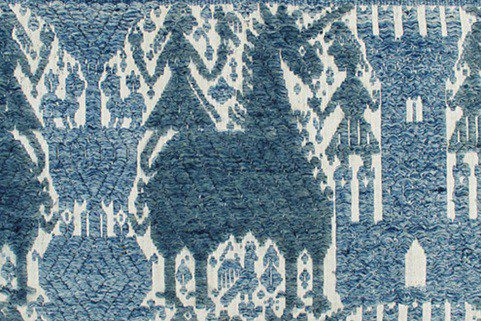Search for the Unicorn
dal 13/5/2013 al 17/8/2013
Segnalato da
The Metropolitan Museum of Art - Communications Department
13/5/2013
Search for the Unicorn
Metropolitan Museum of Art - MET, New York
An Exhibition in Honor of The Cloisters' 75th Anniversary. A show focused on the theme of the unicorn in medieval and Renaissance art will mark the 75th anniversary of the founding of The Cloisters museum and gardens.

An exhibition focused on the theme of the unicorn in medieval and Renaissance art will mark the 75th anniversary of the founding of The Cloisters museum and gardens—the branch of The Metropolitan Museum of Art dedicated to the art and architecture of medieval Europe. Opening May 15 at The Cloisters, the exhibition Search for the Unicorn: An Exhibition in Honor of The Cloisters’ 75th Anniversary will include some 40 works of art in diverse media drawn from the collections of the Metropolitan Museum, other public institutions, and private collections.
The exhibition is made possible by the Michel David-Weill Fund and the Quinque Foundation.
Among the Museum’s most treasured objects, the seven individual hangings collectively known as the Unicorn Tapestries are among the most beautiful and complex works of art surviving from the late Middle Ages. Woven in wool and silk, the tapestries depict vividly a hunt for the magical unicorn set against a verdant landscape. The exhibition will present the Unicorn Tapestries as the finest expression of a subject treated widely in both European art and science, from the Middle Ages through the Renaissance. Given by John D. Rockefeller, Jr. in time for the opening of The Cloisters in 1938, the Unicorn Tapestries are its best-known masterpieces; yet, 75 years later, their history and meaning remain as elusive as the mythical beast itself. The tapestries have been seen both as complicated metaphors for Christ and as a celebration of matrimony. They are emblematic of medieval notions of the magic inherent in the natural world that endured through the Renaissance.
The Morgan Library and Museum will lend its celebrated English Bestiary, a 12th-century manuscript that depicts the unicorn with its head in the lap of a maiden. A late 15th-century majolica dish made for the marriage of Matthias Corvinus (1440–1490), king of Hungary, and Beatrix of Aragon presents a similar image of the unicorn as a metaphor of love and marriage, with the couple’s entwined coats of arms reinforcing the idea of a happy alliance. A pair of unicorns draws a golden chariot representing Chastity on a Florentine desco da parto, a tray or salver painted in celebration of the birth of a child (North Carolina Museum of Art). In the Meshal ha-Kadmoni (Fable of the Ancients), unicorns and other animals are used to present moral lessons. The first printed and illustrated edition of this 13th-century Hebrew text, published in Brescia, Italy in 1491, is on loan from The Library of The Jewish Theological Seminary. The text of the nearly contemporary Peregrinatio in terram sanctam, an illustrated travel diary to the Holy Land that was printed in Germany in 1486 and is in the collection of the Metropolitan Museum, claims that its woodcut of a unicorn was drawn from life. Indeed, the unicorn was often associated with faraway lands.
A page from a 14th-century copy of the Shahnama, a 10th-century text that recounts the legendary deeds of the Persian kings, features Iskandar (Alexander the Great) killing the monster of Habash (Ethiopia), an elegant one-horned beast, quite like a unicorn. A 16th-century engraving by Julius Goltzius after Maerten de Vos suggests that the unicorn’s natural habitat was the American continent! Where the creature resided might be debated, but unicorns were included—and depicted—in early encyclopedias of animals, like Konrad Gesner’s treatise, published in four volumes, 1551–58. (These works are also drawn from the Metropolitan Museum’s collection.)
A large number of plants that appear in the Unicorn Tapestries are recognizable species, many of which are cultivated in the gardens at The Cloisters. During the opening weeks of the exhibition, a special May-blooming millefleurs planting and a potted display of plants that are depicted in the tapestries will be featured in the Bonnefont Garden.
Education programs will accompany the exhibition. These include a family festival at The Cloisters on May 25 and 26, focusing on mythological beasts. A highlight will be an appearance of children’s book author Mary Pope Osborne on May 25, who will read excerpts from Blizzard of the Blue Moon, a fantasy about a boy and a girl who travel through time and embark on a magical adventure with the unicorn at The Cloisters. The novel is part of the popular Magic Tree House series published by Random House. Other events during the festival include gallery tours with craft projects and a self-guided art hunt suitable for children ages 4 through 12. The family festival is free with Museum admission.
The exhibition is organized by Barbara Drake Boehm, Curator, Department of Medieval Art and The Cloisters. Exhibition design is by Michael Langley, Exhibition Design Manager; graphics are by Mortimer Lebigre, Graphic Designer; and lighting is by Clint Ross Coller and Richard Lichte, Lighting Design Managers, all of the Museum’s Design Department.
Search for the Unicorn and the related education programs will be featured on the Museum’s website at www.metmuseum.org.
The Trie Café at The Cloisters will re-open for the season on April 2.
Press Preview: Tuesday, May 14, 10:00 a.m.–noon
Metropolitan Museum of Art - MET
The Iris and B. Gerald Cantor Roof Garden
1000 Fifth Avenue (at 82nd Street) - New York, NY 10028
Tuesday–Thursday: 9:30 a.m.–5:30 p.m.*
Friday and Saturday: 9:30 a.m.–9:00 p.m.*
Sunday: 9:30 a.m.–5:30 p.m.*
Closed Monday (except Met Holiday Mondays), Thanksgiving Day, and December 25
Saturday evenings are made possible by the William H. Kearns Foundation.
*Galleries are cleared fifteen minutes before closing.
Recommended
Adults $25
Seniors (65 and older) $17
Students $12*
Members (Join Now) Free
Children under 12 (accompanied by an adult) Free



